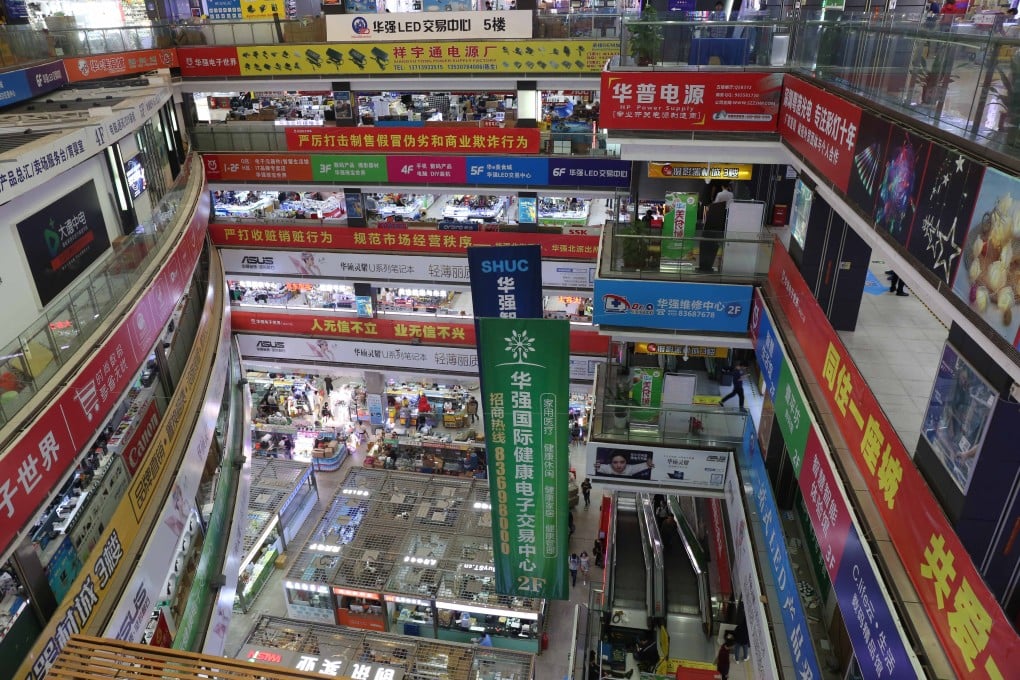Advertisement
Shenzhen's gadget paradise Huaqiangbei struggles to evolve
Phones and tablets give way to drones and bitcoin mining gear
Reading Time:3 minutes
Why you can trust SCMP
0

This article originally appeared on ABACUS
Anyone who loves electronics owes themselves a trip to Shenzhen’s Huaqiangbei.
Just across the border from Hong Kong, the district boasts a series of towering malls with floors full of stalls crammed together, all packed with electronics.
If you think of it, you can probably find it: From drones to selfie sticks, circuit boards to robots, Huaqiangbei is an electronics dreamland.
But as technology changes, Huaqiangbei is being forced to adapt to differing times.
Origins
In the late 1970s, a military factory from a village in northern Guangdong Province moved south to Shenzhen, hoping to take advantage of its location and loosening economic policy.
Advertisement